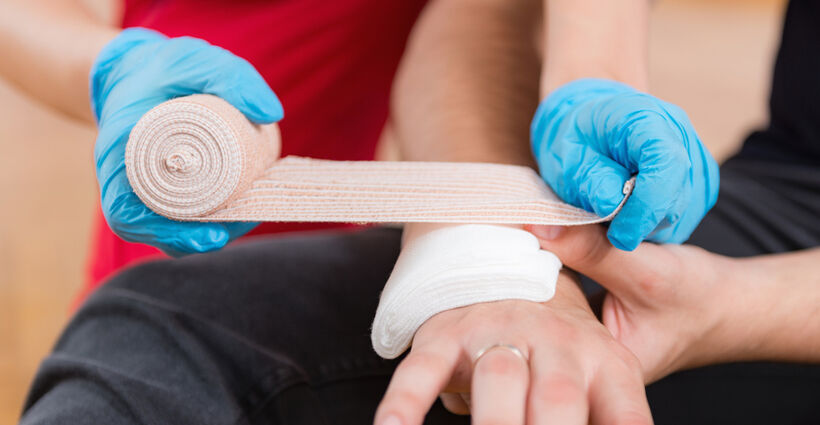When venturing into remote areas, whether it be for a camping trip, a hike, or a backpacking adventure, it’s essential to be prepared for the unexpected. One of the most critical aspects of preparation is having knowledge of first aid techniques and carrying a well-stocked first aid kit. In this essay, we will discuss the importance of first aid training, the types of injuries and illnesses that may occur in remote areas, and the essential items to include in a remote area first aid kit.
The Importance of First Aid Training
First aid training is crucial for anyone who ventures into remote areas. Accidents can happen anytime, and in remote areas, medical help may be hours or even days away. By knowing basic first aid techniques, you can provide immediate care to an injured or ill person, thus increasing their chances of survival.
First aid training covers a wide range of topics, including cardiopulmonary resuscitation (CPR), bleeding management, splinting, and wound cleaning and dressing. It also teaches you how to assess a situation, identify potential hazards, and prioritize treatment.
In remote areas, first aid training is even more critical as there may be no access to medical facilities or communication networks. In such cases, the knowledge and skills learned through first aid training can be the difference between life and death.
Types of Injuries and Illnesses in Remote Areas
Remote areas can be hazardous, and injuries and illnesses can occur due to various factors such as rugged terrain, extreme weather conditions, and wildlife encounters. Some common injuries and illnesses that may occur in remote areas include:
1. Trauma: Falls, accidents, and animal attacks can result in broken bones, head injuries, and lacerations.
2. Hypothermia: Exposure to cold temperatures and wet conditions can lead to hypothermia, a potentially life-threatening condition.
3. Heat-related illnesses: Prolonged exposure to high temperatures can cause heat exhaustion, heat stroke, and dehydration.
4. Altitude sickness: Rapid ascension to high altitudes can cause altitude sickness, which can lead to headaches, nausea, and fatigue.
5. Insect bites and stings: Insects such as snakes, spiders, and mosquitoes can inflict painful bites and stings, some of which can be life-threatening.
6. Waterborne illnesses: Contaminated water sources can cause waterborne illnesses such as giardiasis, cryptosporidiosis, and E. coli.
7. Frostbite: Exposure to cold temperatures can cause frostbite, which can lead to tissue damage and loss of limbs.
Essential Items in a Remote Area First Aid Kit
A well-stocked first aid kit is essential for remote area adventures. While the specific items may vary depending on the location, duration, and number of people in the group, there are some essential items that should always be included.
1. Bandages and dressings: Including different sizes of band-aids, gauze pads, and rolls, as well as sterile dressings for wound management.
2. Wound cleaning agents: Alcohol wipes or antiseptic wipes to clean and disinfect wounds.
3. Pain relief medication: Acetaminophen or ibuprofen for pain and fever reduction.
4. Antibiotic ointment: To prevent infection in minor cuts and scrapes.
5. Burn cream: For minor burns, such as sunburn or minor burns from touching hot objects.
6. Splinting materials: Splints can be used to immobilize injured limbs or other body parts.
7. Blanket or emergency blanket: To keep the patient warm and comfortable.
8. First aid manual: A guide on how to administer basic first aid.
9. Personal protective equipment: Gloves, masks, and eye protection to prevent the spread of infection.
10. Communication devices: A cell phone, satellite phone, or two-way radio to call for help in an emergency.
11. Navigation aids: A compass, map, and GPS device to help locate the injured person and find the way to medical help.
12. Shelter: A tent, tarp, or other shelter to protect the patient from the elements.
13. Fire starter: A means to start a fire for warmth, signaling, or sterilizing equipment.
14. Water purification tablets or filter: To purify water from questionable sources.
15. Food and water: Non-perishable food items and water to sustain the patient until medical help arrives.
First aid training and a well-stocked first aid kit are essential for anyone venturing into remote areas. By being prepared, you can provide immediate care to an injured or ill person, thus increasing their chances of survival. Remember, in remote areas, medical help may be hours or even days away, so it’s crucial to have the knowledge and equipment to handle emergencies. Always prioritize safety, and never take unnecessary risks. With the right training and equipment, you can enjoy your remote area adventure with peace of mind.




